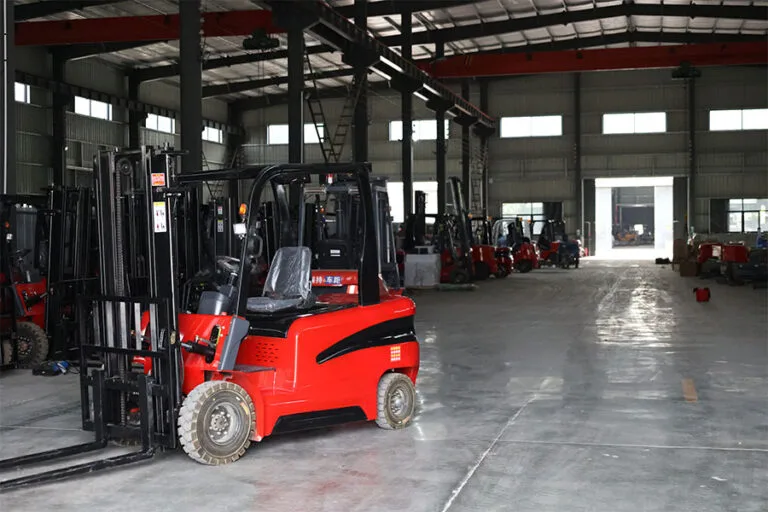Efficient Digging Starts with a Small Garden Excavator
I’m thrilled to have you here! Before we dive into the content, let’s stay connected. Join me on my social media platforms for more insights, community engagement, and regular updates. Here’s where you can find me:
📌 Facebook: Shandong Huaying International Trade Co., Ltd.
Now, let’s embark on this journey together. I hope you find the content here not only insightful and engaging but also valuable to your interests. Let’s learn, grow, and connect!
Table of Contents
Introduction
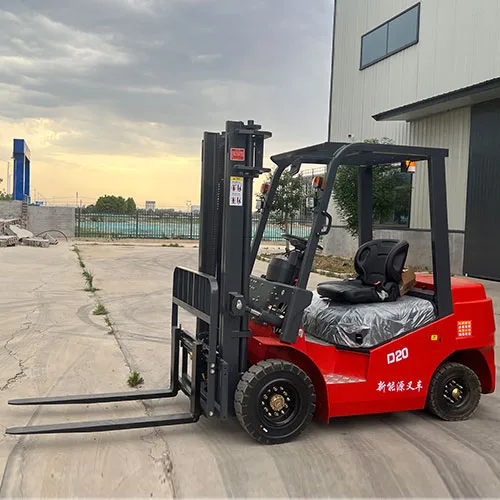
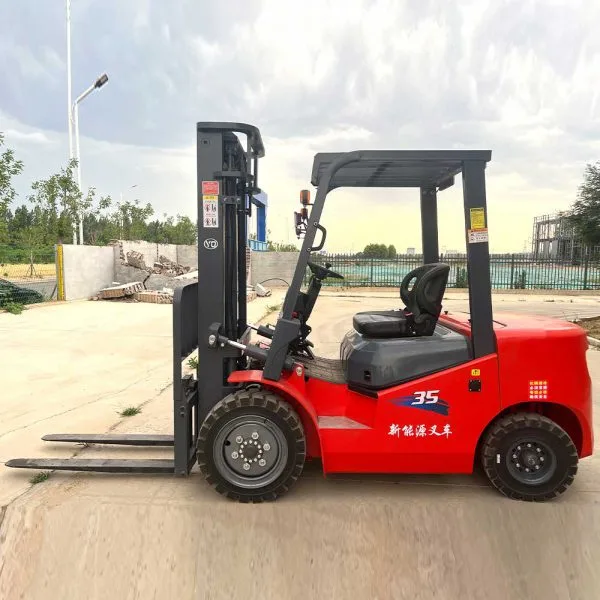
In modern warehouses and industrial environments, the choice of forklift can significantly impact productivity, safety, and operational costs. Among the various types, the sit down electric forklift has become increasingly popular due to its efficiency and user-friendly design. This type of forklift combines electric power with a seated operator position, offering several benefits over traditional models. This blog will explore the top 5 advantages of a sit down electric forklift today, helping you understand why this equipment is a smart investment for many businesses.
Advantage 1: Enhanced Operational Efficiency with Sit Down Electric Forklift
One of the foremost advantages of choosing this type of forklift lies in the marked improvement in operational efficiency. Electric lift trucks, by design, are engineered to deliver faster acceleration and more responsive controls compared to traditional combustion-engine models. This allows operators to move pallets and cargo with greater agility and precision, reducing time spent on repetitive tasks.
Additionally, the sit down configuration provides a more relaxed and ergonomic posture for the driver. When operators are seated comfortably, they experience less physical strain, especially during long shifts. This reduces fatigue-related errors and enhances overall task performance. In fast-paced environments such as logistics hubs, manufacturing plants, or retail distribution centers, even a slight increase in operator stamina can translate into significant gains in output.
Furthermore, electric models generally require fewer mechanical interventions. Without an engine, transmission, or complex fuel system to maintain, downtime is kept to a minimum. Businesses benefit from reduced repair expenses and increased machine availability. Over time, the compounded savings from lower maintenance, better operator endurance, and quicker load movement result in a streamlined, more productive operation.
Advantage 2: Environmental Benefits of a Sit Down Electric Forklift
As environmental consciousness continues to shape industrial decisions, electric-powered forklifts stand out as a forward-thinking solution. By adopting a sit down electric forklift, companies contribute to cleaner indoor air quality and lower overall greenhouse gas emissions. These machines operate without the harmful exhaust typically emitted by gas, diesel, or LPG forklifts, which is especially crucial in confined indoor spaces like warehouses, cold storage units, or manufacturing areas.
Not only does this help companies comply with local environmental legislation and air quality standards, but it also supports broader sustainability goals. Many organizations are now required or incentivized to report on their carbon footprint and environmental impact. Integrating electric material-handling equipment into daily operations becomes a visible and effective step toward achieving carbon neutrality or sustainability certification.
Employees also benefit from the cleaner environment. Workers exposed to lower levels of pollution experience fewer respiratory issues and enjoy a more pleasant working atmosphere. This contributes to improved morale and lower absenteeism. Additionally, the absence of engine noise enhances the overall work experience, allowing operators to communicate more clearly and concentrate better on safety and productivity.
Advantage 3: Safety Features of a Sit Down Electric Forklift
Safety remains a top priority for any facility managing the movement of heavy goods. Sit down electric forklifts are built with safety in mind, integrating a range of features that minimize operator risk while maximizing vehicle control. Many modern models are equipped with automatic speed reduction when navigating corners, helping to prevent tip-overs or collisions. Some include stability systems that adjust performance dynamically to the load and conditions.
The operator’s seated position offers optimal visibility of the working area, reducing blind spots and enabling quicker response to obstacles or changes in the work environment. Ergonomic controls placed within easy reach minimize awkward movements and reduce muscle strain, further enhancing operational comfort and safety.
Another key advantage is the reduced level of noise and vibration. Traditional forklifts powered by internal combustion engines generate constant mechanical rumbling, which can lead to operator fatigue, distraction, or even long-term hearing issues. In contrast, electric forklifts offer quieter operation, contributing to a more focused and safe workplace. Together, these factors create a safer job site, lowering the risk of injury and equipment damage while promoting a culture of safety awareness.
Advantage 4: Cost Savings and Maintenance of Sit Down Electric Forklift
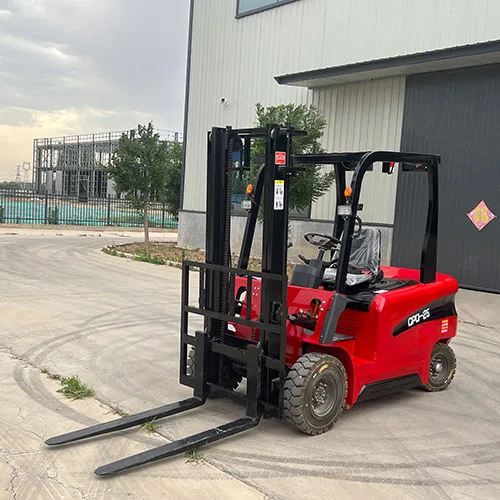
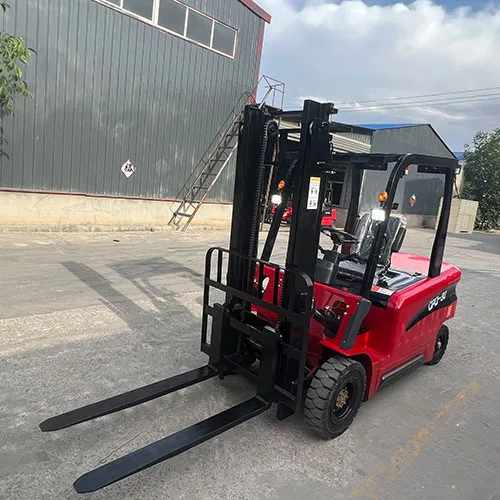
One of the most compelling arguments for investing in this type of forklift is its economic value over time. Although the upfront cost may be higher compared to internal combustion models, the total cost of ownership is generally lower. Unlike fuel-powered units, electric variants operate without combustible fluids, transmissions, or oil systems. As a result, maintenance demands are reduced dramatically.
Battery-powered systems have advanced significantly in recent years. Modern lithium-ion and lead-acid battery technologies now provide longer runtimes and shorter charging cycles. This reduces the need for frequent recharging interruptions and ensures consistent performance throughout a shift. In multi-shift operations, swapping batteries or integrating fast-charging stations can keep downtime at bay.
Additionally, repair costs tend to be lower due to fewer mechanical parts that wear down over time. There is no need to purchase fuel, oil, spark plugs, or filters, all of which are standard consumables for internal combustion forklifts. This contributes to predictable budgeting and greater financial control over operational expenses. When looking at equipment lifecycle costs over five or ten years, electric models present a clear advantage in affordability and reliability.
Sit Down Electric Forklift Cost Comparison Table
| Cost Aspect | Sit Down Electric Forklift | Internal Combustion Forklift |
|---|---|---|
| Initial Purchase Price | Moderate to High | Moderate |
| Fuel Cost | None (Electric Charging) | Gasoline/Diesel Fuel |
| Maintenance Frequency | Lower (Fewer Moving Parts) | Higher (Engine Maintenance) |
| Downtime Due to Repairs | Less Frequent | More Frequent |
| Operational Efficiency | High (Smooth and Quiet) | Moderate |
This table highlights why many businesses see greater value in choosing electric models despite higher upfront costs.
Advantage 5: Versatility and Ease of Use with a Sit Down Electric Forklift
A key factor that sets the sit down electric forklift apart in today’s fast-paced industrial world is its remarkable versatility paired with exceptional ease of use. These machines are engineered to adapt to a wide range of working conditions, making them suitable for indoor warehouses, distribution centers, retail environments, and even moderately rugged outdoor spaces such as loading docks or paved yards.
Their compact turning radius and tight maneuverability allow them to navigate narrow aisles and tight corners with confidence. This is particularly advantageous for operations with limited floor space, where every inch counts. Whether the task involves stacking pallets on high racks, loading delivery trucks, or transporting goods between workstations, the forklift’s flexible design accommodates it all.
Most modern units offer customization options, such as adjustable seating for operator comfort, programmable performance settings based on task requirements, and the ability to integrate with specialized attachments like clamps, side shifters, or rotators. These attachments extend the capabilities of the forklift beyond just lifting and moving pallets—they allow handling of drums, rolls, crates, and odd-shaped loads, enhancing the forklift’s value across various industries.
Ease of use is another area where this equipment excels. New operators typically find it more intuitive to learn compared to larger, more complex internal combustion or stand-up forklifts. Features such as responsive electric steering, user-friendly dashboard layouts, and precise pedal control make the driving experience smoother and less intimidating. Many models also include digital displays that provide real-time feedback on battery status, load weight, and safety warnings—helping even novice users make informed operational decisions.
Training time for operators is significantly reduced, which benefits organizations in several ways. Businesses can onboard new team members faster, reduce initial labor costs, and maintain productivity during seasonal demand spikes or staffing transitions. This ease of use also contributes to operator satisfaction and retention, as workers tend to prefer equipment that’s less physically demanding and more comfortable to operate over long periods.
In essence, the sit down electric forklift is not only a practical tool—it’s a strategic investment in flexibility, workforce efficiency, and long-term operational adaptability. Its broad usability and intuitive interface ensure that businesses can respond to shifting logistics challenges with speed and confidence.
Conclusion
Choosing the right forklift can transform warehouse operations. The sit down electric forklift offers significant advantages including enhanced efficiency, environmental friendliness, safety, cost savings, and operational versatility. As industries continue to modernize and prioritize sustainability and worker safety, the appeal of electric forklifts grows stronger.
Investing in a sit down electric forklift today is not just about immediate benefits but also about positioning your business for long-term success and compliance with future industry standards.
FAQ
How long can a sit down electric forklift operate on a single charge?
Typically, these forklifts can operate between 6 to 8 hours depending on battery size and workload, with fast charging options available.
Are sit down electric forklifts suitable for outdoor use?
Yes, many models are designed for both indoor and outdoor environments, but care should be taken on uneven terrain.
What maintenance is required for electric forklifts?
Regular battery checks, charging system maintenance, and periodic inspections of electrical components are essential.
Can a sit down electric forklift handle heavy loads?
Absolutely, many sit down electric forklifts can handle loads ranging from 3,000 to 15,000 pounds, depending on the model.


